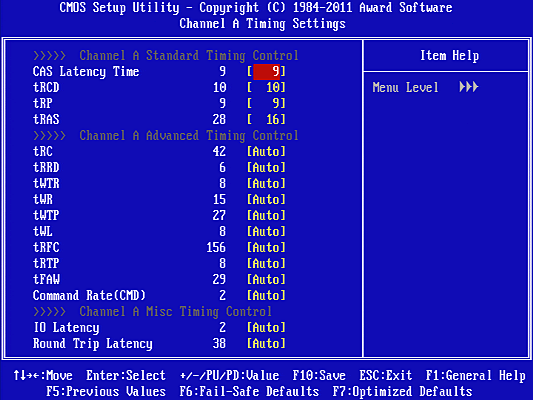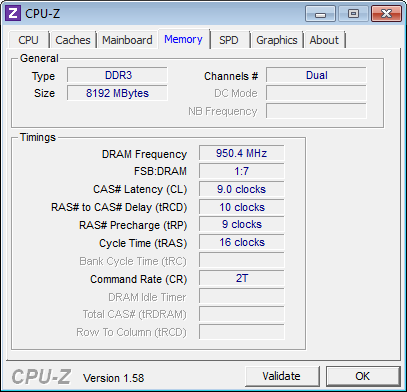System Builder Marathon, Sept. 2011: $2000 Performance PC
Overclocking, Or Maybe Not
We recommend a continuous core limit of 1.38 V or less for Sandy Bridge-based processors, and a peak voltage of no more than 1.40 V on a regular basis. This recommendation is based on a vast number of processors we’ve seen live a long time or die rather quickly.
And yet, we test motherboards at 1.35 V CPU core due to problems we’ve experienced with certain voltage regulators taking out our precious CPUs when overstressed. Gigabyte’s board had no power issues in our review, so it should have been good for the increase from our award-winning press sample's 1.35 V to the 1.38 V asked of our retail purchase, right?
Unfortunately, we could not get the system to run reliably at 1.38 V. It behaved as though it was overheating, even though CPU temperatures remained well below the Sandy Bridge architecture’s high thermal threshold.
We can only guess that it was the voltage regulator that was overheating, and that makes sense because only half of its MOSFETs were covered with a heat sink.
We couldn’t even reach the 4.55 GHz frequency we achieved in our original review without slamming headlong into stability problems. Although we saw 4.7 GHz was seen, that clock rate couldn’t be maintained without blowing a high-pressure fan directly onto the motherboard.
Our memory encountered similar overclocking restrictions. Though we were able to shorten latency to CAS 8 at its rated DDR3-1866, increasing the base clock by 2% limited our timing optimizations to a change in tRAS.
The final overclock of 4.48 GHz is sure to hurt the value rating of our overclocked configuration, and we can only hope to achieve similar average performance to the previous build, even after the graphics card upgrade.
A memory data rate of DDR3-1901 is similarly disappointing for these DDR3-1866-rated modules.
Worse still, we were completely unable to overclock the graphics cards. Then again, with a stock GPU frequency of 772 MHz, we didn’t see the point of trying anything less than the 800 MHz we used when the system crashed repeatedly. More voltage might have helped, but the risk of using a higher voltage setting doesn't offset the minimal potential reward.
We even tried overclocking the graphics memory, and these cards crashed after only a 16 MHz increase. We speculated this might happen earlier in the piece, so we simply gave up trying to overclock EVGA's most entry-level GeForce GTX 580s.
Current page: Overclocking, Or Maybe Not
Prev Page Hardware Installation Next Page Test Settings And BenchmarksGet Tom's Hardware's best news and in-depth reviews, straight to your inbox.
-
wrazor Great article. I am wondering, if instead you had gone with the EVGA 3GB GTX 570 SLI, maybe OC would have been possible? 2000$ is quite a bit of money. I wonder how these babies would hold out for Nvidia's 3D experience? Personally I am not a big 3D fan in theatres(headache and stuff), but gaming has to have a chance. You had an article on projectors gaming experience? Do it with 3d performance\eyefinity with the system marathon builds? That would be really cool. :)Reply -
Yargnit I'm actually surprised that after the recent micro-stutter article you didn't opt for 3x 570's/6950's/6970's instead of 2x 580's. the First two should be cheaper than 2x 580's, while the third would cost very similarly.Reply
All three should have provided at least equal performance, and been better on intangible benefits to micro stuttering. -
DjEaZy ... a bit of stagnation in performance department... no big difference in Q2 and Q3 models... gonna wait til bulldozer...Reply -
decembermouse Poor case decision. Inadequate PSU (did you seriously expect good overclocking results?). Nice graphics, but severely limited by the other components. Hence, "nice graphics" doesn't matter. It's like putting a V10 inside a Dodge Neon. Just... why? I make a point of using good cases even in less-expensive builds. Compromising on PSU and the case are two things I've learned are no-nos. We can see how this hurt the outcome, When any OC whatsoever results in instability, you've made a mistake (or several).Reply
Now I know we'll see the usual "well this is meant to be a learning experience, learn from our errors and improve for next time" comments, but these are not mistakes I expect to see Tom's writers making. Even non-uber-enthusiast readers can probably see that some of the imbalances here. No result is horrible, but I'd have expected Tom's to look at that Newegg shopping cart and immediately think "nope guys, this isn't right. This gfx setup... in an Antec 300?" etc.
Always love these articles guys, keep them up! Even if I do disagree with some of the choices obviously ;) Really looking forward to $1k and $500 builds in the coming days! -
anonymous x decembermousePoor case decision. Inadequate PSU (did you seriously expect good overclocking results?).No, this case cools better than many (most?) cases more expensive than it. 2x 120mm intake is more than adequate for SLI cards with room for air to flow between them. Did you even look at the power consumption numbers? The system when overclocked only consumed 697w at load from the wall (actual consumption is less), while the PSU is rated at 850w.Reply -
Pawessum16 Where the heck did they get that SSD for $170????? It's $205 on Newegg, and that's after a $35 price drop. What a steal....Reply -
Hupiscratch These SBM keep becoming cheaper. At first was 5k, then 2.5k and now is 2k for the enthusiast one. The recession is beating hard.Reply -
jestersage maybe one of the 120mm fans should have been placed on the side panel? just wondering...Reply -
iam2thecrowe all i have to say is, ditch the crappy Gigabyte motherboard and get sonething better, and for the price difference get the i5 2500k, its no real loss to the i7.Reply







